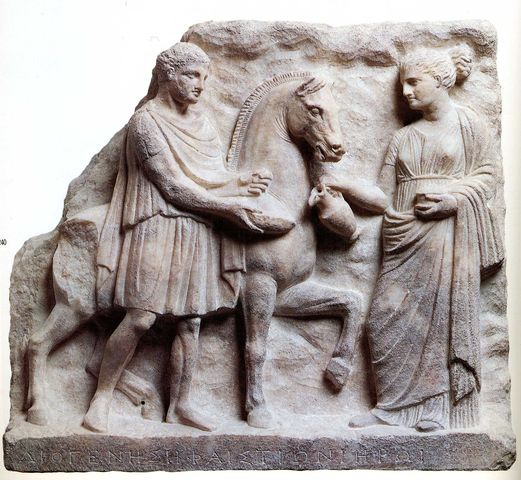Well, she also said that bones are preserved in a rather good state (http://www.iefimerida.gr/news/179622/me ... -amfipolis), so you can see why I prefer not to elaborate on such short statements. I am not against speculation (unavoidable here), just cautious over potential over-interpretations.I sympathise with your caution about the sources of information, but in fact the official releases from the Culture Ministry and statements by Lina Mendoni do appear to have been accurate, if limited.
In your book you define the Alexandrian stade as 165 m. In this Wikipedia article, I see that the Egyptian stade is 157.5 meters (http://en.wikipedia.org/wiki/Eratosthenes) (not sure what the reference is and not sure if that is the same as the Alexandrian stadion). Here (http://link.springer.com/article/10.1007%2FBF00417008) I read that the stadion used by Eratosthenes (and probably the Alexandrian one) is a probably bit more than 166 meters. They also give a measurement of the Heptastadion of Alexandria to 1202 meters (from M. Bey's maps), which, divided by 7 gives a stadion of 171.7 m.I might not be so sure that they are wrong on this one, so I have some sympathy for the archaeologists having been led slightly astray by the dimensions. They are right that there are a number of other things that might make you think of Deinocrates in respect of this tomb. It was definitely built to be a stade in diameter, for example.
So, I gather that the closest match is with the Egyptian stadion, but that probably does not have its origin to Dinocrates. I only suspect that they have more solid evidence for the connection to this architect (as the journalist who was following the excavation from 2012 recently revealed in a blog - see earlier post by Efstathios), so then this the tomb may eventually be used to re-define the value of the (Alexandrian) stadion. But probably not the other way around.
In one article by Dorothy King it was mentioned that connection with Deinocrates comes from his association with circle-shaped monuments. I was a bit puzzled by that remark, but eventually the only relevant thing i found is the following (http://digitool.library.mcgill.ca/R/?fu ... EN01-MCG02) (starting around page 133):
Not that this proves anything of course.At a time when architects had trouble gaining recognition. Dinocrates seems indeed to have succeeded. Named as "Dinochares" he is the fifth on Plinys list of five architects whom he considers to have excelled in their craft. and whom he also names twice in connection with the foundation of AJexandria. ln Ausonius' fourth century A.O. poem on the Moselle "Dinochares" again appears. this time as seventh of seven great architects in a list headed by the legendary Daedalus and credited to the tenth book of Varro's Hebdomades Ausonius (presumably following Varra) makes him the
builder of Ptolemy's palace at Alexandria of a four-sided pyramid which "devours its own shadow"- and of a miraculous levitating statue of Arsinoe in her temple at Pharos.
"Dinochares" is not the only variation. For Strabo. who writes of Alexandria's foundation mentioning only the involvement of unnamed, plural '''architects" and following Strabo. for the third-century A.D. grammarian Solinus. a "Cheirocrates" from Rhodes (not Macedonia) collaborated in the rebuilding under Alexander's patronage. of the colossal Temple of Anemis at Ephesus in the latter pan of the fourth century B.C. The surviving manuscripts of Pseudo-Callisthenes' third-century A.D. Alexander Romance hesitate between "Hermocrates" and "Hippocrates" (again from Rhodes) as Alexander's architect at Alexandria. The mount Athos project is discussed twice by Plutarch but its perpetrator is one "Stasicrates" who also according to Plutarch designed a magnificent funerary monument for Hephaestion, Alexander' s inseparable campanion, the Patroclus to his Achilles. Three authors besides Vitruvius name '''Dinocrates'' in connection with Alexandria: Vlenus Maximus, Ammianus Marcellinus. and Julius Valerius, a Roman historian of the late third century A. D. Like Pseudo-Callisthenes. Strabo and Solinus, also gives Rhodes as the architect's place of origin.
Ali these names converge less on a single identifiable historical personage than on a persona who emerges from a nexus of constants - grand architectural projects (real or imagined). architect and king - aIl related in a gloss on power for which the name Dinocrates most frequent of the aliases can be read as a kind of epitome. Kratos, of course, is power or might itself, particularly mastery through bodily strength. Kratus was also the name the Pvthagoreans gave to the number ten. The masculine noun "ho dinos" has to do with circularity or circular motion - whirlpools, eddies, circular threshing floors, the whirling of a sling. Like the feminine "he dine", dinos can also be the rotation of the heavens: the whirling the pre-Socratic philosopher Anaxagoras held to be the effect of "nous" as reguIator of the universe. A creative force of nature that resonates with the naturaI power Vitruvius says was constructed (architectata) to govem the revolutions of the universe - the same cosmic spin which is said in Book 10 bring the principles of machinery into being
